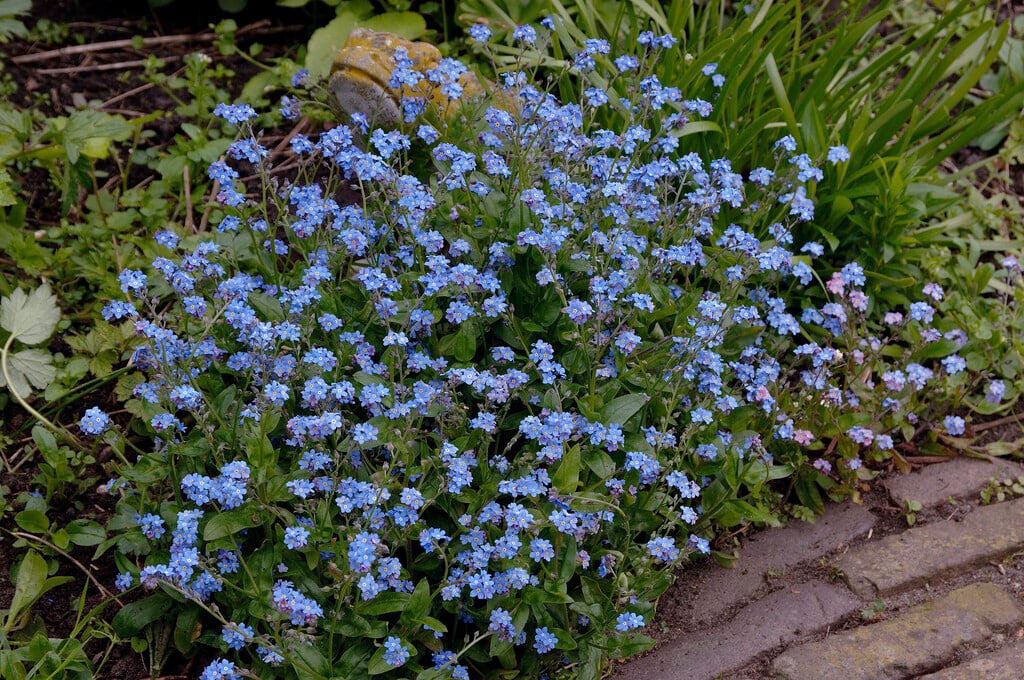Myosotis sylvatica
garden forget-me-not
A tufted, hairy perennial, usually grown as a biennial to 30cm in height, with grey-green leaves to 11cm long, flowering between spring and early summer, bearing small, bright blue, 5-lobed flowers with white or yellow centres
Size
Ultimate height
0.1–0.5 metresTime to ultimate height
1–2 yearsUltimate spread
0.1–0.5 metresGrowing conditions
Moisture
Moist but well–drainedpH
Acid, Alkaline, NeutralColour & scent
| Stem | Flower | Foliage | Fruit | |
| Spring | Blue | Green | ||
|---|---|---|---|---|
| Summer | Blue | Green | ||
| Autumn | Green | |||
| Winter |
Position
- Partial shade
Aspect
South–facing or North–facing or West–facing or East–facing
Exposure
Exposed or Sheltered Hardiness
H6Botanical details
- Family
- Boraginaceae
- Native to GB / Ireland
- Yes
- Foliage
- Semi evergreen
- Habit
- Tufted
- Genus
Myosotis can be annuals, biennials or perennials, with simple leaves and clusters of small, salver-shaped blue, yellow or white flowers, with yellow or white eyes, in spring or early summer
- Name status
Correct
How to grow
Cultivation
Content in many garden conditions, a native of woodland and rocky places. Nectar and pollen is enjoyed by bumble bees and butterflies
Propagation
Propagate by seed
Suggested planting locations and garden types
- Patio and container plants
- Cottage and informal garden
- Wildlife gardens
- Wildflower meadow
- Flower borders and beds
- Banks and slopes
- Underplanting of roses and shrubs
Pruning
You may wish to remove or cut back old plants to prevent self-seeding
Pests
Generally pest-free
Diseases
Susceptible to powdery mildews
Love gardening
Sign up to receive regular gardening tips, inspiration, offers and more
View our Privacy Policy
Get involved
The Royal Horticultural Society is the UK’s leading gardening charity. We aim to enrich everyone’s life through plants, and make the UK a greener and more beautiful place.
